Related Research Articles

Cloning is the process of producing individual organisms with identical genomes, either by natural or artificial means. In nature, some organisms produce clones through asexual reproduction; this reproduction of an organism by itself without a mate is known as parthenogenesis. In the field of biotechnology, cloning is the process of creating cloned organisms of cells and of DNA fragments.
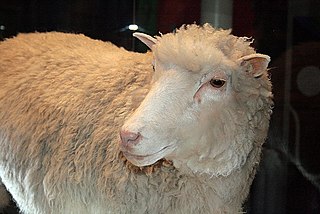
Dolly was a female Finn-Dorset sheep and the first mammal that was cloned from an adult somatic cell. She was cloned by associates of the Roslin Institute in Scotland, using the process of nuclear transfer from a cell taken from a mammary gland. Her cloning proved that a cloned organism could be produced from a mature cell from a specific body part. Contrary to popular belief, she was not the first animal to be cloned.

Anthony John Clark OBE FRSE was an English molecular biologist who was a founder of applying molecular technology to farm animals. He was director of the Roslin Institute from 2002 to 2004.
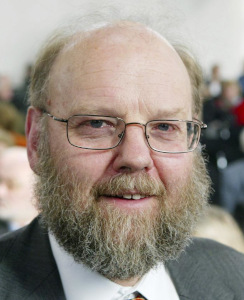
Sir Ian Wilmut was a British embryologist and the chair of the Scottish Centre for Regenerative Medicine at the University of Edinburgh. He is best known as the leader of the research group that in 1996 first cloned a mammal from an adult somatic cell, a Finnish Dorset lamb named Dolly.
Polly and Molly, two ewes, were the first mammals to have been successfully cloned from an adult somatic cell and to be transgenic animals at the same time. This is not to be confused with Dolly the Sheep, the first animal to be successfully cloned from an adult somatic cell where there wasn’t modification carried out on the adult donor nucleus. Polly and Molly, like Dolly the Sheep, were cloned at the Roslin Institute in Edinburgh, Scotland.
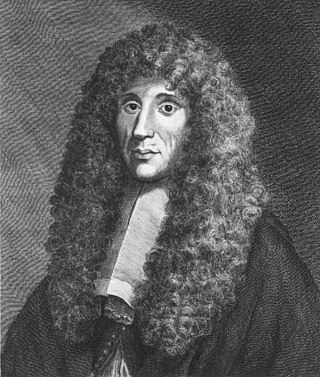
A biologist is a scientist who conducts research in biology. Biologists are interested in studying life on Earth, whether it is an individual cell, a multicellular organism, or a community of interacting populations. They usually specialize in a particular branch of biology and have a specific research focus.
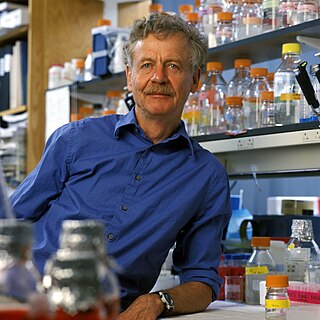
Rudolf Jaenisch is a Professor of Biology at MIT and a founding member of the Whitehead Institute for Biomedical Research. He is a pioneer of transgenic science, in which an animal’s genetic makeup is altered. Jaenisch has focused on creating genetically modified mice to study cancer, epigenetic reprogramming and neurological diseases.
This page provides an alphabetical list of articles and other pages about biotechnology.
Megan and Morag, two domestic sheep, were the first mammals to have been successfully cloned from differentiated cells. They are not to be confused with Dolly the sheep which was the first animal to be successfully cloned from an adult somatic cell or Polly the sheep which was the first cloned and transgenic animal. Megan and Morag, like Dolly and Polly, were cloned at the Roslin Institute in Edinburgh, Scotland in 1995.
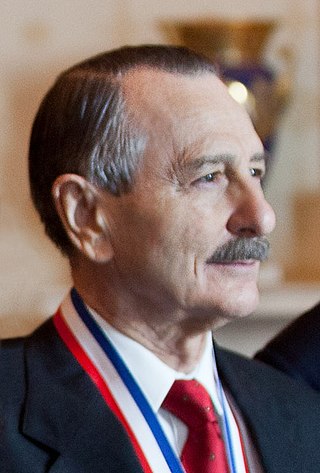
Ralph Lawrence Brinster is an American geneticist, National Medal of Science laureate, and Richard King Mellon Professor of Reproductive Physiology at the School of Veterinary Medicine, University of Pennsylvania.
Keith Henry Stockman Campbell was a British biologist who was a member of the team at Roslin Institute that in 1996 first cloned a mammal, a Finnish Dorset lamb named Dolly, from fully differentiated adult mammary cells. He was Professor of Animal Development at the University of Nottingham. In 2008, he received the Shaw Prize for Medicine and Life Sciences jointly with Ian Wilmut and Shinya Yamanaka for "their works on the cell differentiation in mammals".

Genetically modified animals are animals that have been genetically modified for a variety of purposes including producing drugs, enhancing yields, increasing resistance to disease, etc. The vast majority of genetically modified animals are at the research stage while the number close to entering the market remains small.

Genetically modified mammals are mammals that have been genetically engineered. They are an important category of genetically modified organisms. The majority of research involving genetically modified mammals involves mice with attempts to produce knockout animals in other mammalian species limited by the inability to derive and stably culture embryonic stem cells.

Genetic engineering is the science of manipulating genetic material of an organism. The first artificial genetic modification accomplished using biotechnology was transgenesis, the process of transferring genes from one organism to another, first accomplished by Herbert Boyer and Stanley Cohen in 1973. It was the result of a series of advancements in techniques that allowed the direct modification of the genome. Important advances included the discovery of restriction enzymes and DNA ligases, the ability to design plasmids and technologies like polymerase chain reaction and sequencing. Transformation of the DNA into a host organism was accomplished with the invention of biolistics, Agrobacterium-mediated recombination and microinjection. The first genetically modified animal was a mouse created in 1974 by Rudolf Jaenisch. In 1976 the technology was commercialised, with the advent of genetically modified bacteria that produced somatostatin, followed by insulin in 1978. In 1983 an antibiotic resistant gene was inserted into tobacco, leading to the first genetically engineered plant. Advances followed that allowed scientists to manipulate and add genes to a variety of different organisms and induce a range of different effects. Plants were first commercialized with virus resistant tobacco released in China in 1992. The first genetically modified food was the Flavr Savr tomato marketed in 1994. By 2010, 29 countries had planted commercialized biotech crops. In 2000 a paper published in Science introduced golden rice, the first food developed with increased nutrient value.
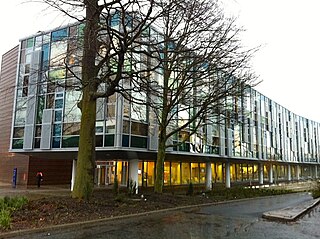
The Roslin Institute is an animal sciences research institute at Easter Bush, Midlothian, Scotland, part of the University of Edinburgh, and is funded by the Biotechnology and Biological Sciences Research Council.
Tracy was a transgenically modified sheep created by scientists at Scotland's Roslin Institute to produce the human protein alpha 1-antitrypsin, a substance regarded in the 1990s as a potential pharmaceutical for the treatments of cystic fibrosis and emphysema. Notably, she is the first transgenic farm mammal ever created.

In re Roslin Institute (Edinburgh), 750 F.3d 1333 (Fed. Cir. 2014), is a 2014 decision of the United States Court of Appeals for the Federal Circuit rejecting a patent for a cloned sheep known as "Dolly the Sheep"— the first mammal ever cloned from an adult somatic cell.

Aspects of genetics including mutation, hybridisation, cloning, genetic engineering, and eugenics have appeared in fiction since the 19th century.
Hugh Paterson Donald (1908–1989) was a New Zealand-born, British biologist, noteworthy as an important contributor to Peter Medawar's research on skin grafts.
References
- ↑ Giles, Jim; Knight, Jonathan (1 February 2003). "Dolly's death leaves researchers woolly on clone ageing issue". Nature. 421 (6925): 776. Bibcode:2003Natur.421..776G. doi: 10.1038/421776a . ISSN 1476-4687. PMID 12594470.
- ↑ Schnieke, A. E. (19 December 1997). "Human Factor IX Transgenic Sheep Produced by Transfer of Nuclei from Transfected Fetal Fibroblasts". Science. 278 (5346): 2130–2133. Bibcode:1997Sci...278.2130S. doi:10.1126/science.278.5346.2130. PMID 9405350.
- ↑ Campbell, K. H. S.; McWhir, J.; Ritchie, W. A.; Wilmut, I. (March 1996). "Sheep cloned by nuclear transfer from a cultured cell line". Nature. 380 (6569): 64–66. Bibcode:1996Natur.380...64C. doi:10.1038/380064a0. ISSN 1476-4687. PMID 8598906. S2CID 3529638.
- 1 2 3 4 5 6 7 8 9 10 "Bulfield, Grahame, 1941-: (geneticist, formerly director and chief executive, Roslin Institute, Edinburgh and vice-principal, University of Edinburgh) | University of Edinburgh Archive and Manuscript Collections". archives.collections.ed.ac.uk. Retrieved 10 February 2021.
- ↑ Bulfield, Grahame John (1968). "Genetical and biochemical studies of fatness in mice".
{{cite journal}}: Cite journal requires|journal=(help) - ↑ "University News". News. The Times (England) (Article). 30 July 1976. p. 16.
- ↑ Raeburn, Paul (31 July 1984). "Muscular Dystrophy Identified In Mouse, Speeding Search For A Cure". Domestic News. The Associated Press.
- ↑ Donnelly, Joe (22 April 1996). "More of the same, please". The Herald (Glasgow). p. 26.
- 1 2 Bragg, Melvyn (14 January 1999). "Genetic Engineering". bbc.co.uk (Radio podcast). In Our Times. Retrieved 10 February 2021.
- ↑ Radford, Tim (23 May 1998). "Double jeopardy". News. The Guardian. London, UK. ISSN 0261-3077.
- ↑ Ross, Emma (13 August 2000). "Some think human cloning may be around the corner". Science, Medicine, Technology. Pittsburgh Post-Gazette (Pennsylvania).
- ↑ "Dolly the sheep UK Tories to axe cash for cloning experiments". World. Calgary Herald. 1 March 1997. p. 16.
- ↑ "Viragen Stockholders Meeting Features Collaboration With Institute That Created 'Dolly The Sheep'; Progress Reported On All Projects". Financial News. PR Newswire. 28 February 2001.
- ↑ "Royal Society of Edinburgh". News. The Times (England) (Article). 12 March 1992.